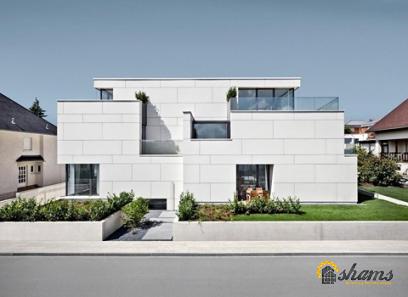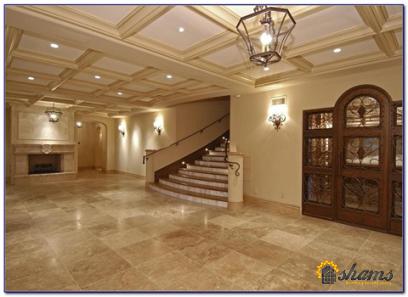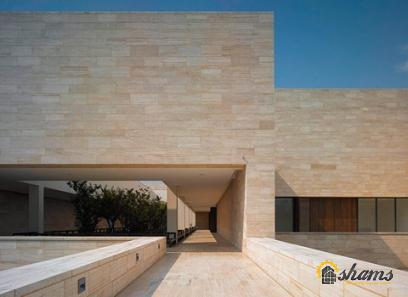Marble, renowned for its timeless beauty and elegance, has been a staple material for building facades for centuries. This versatile stone not only adds aesthetic appeal but also boosts the structural integrity of a building. As architects and developers continue to embrace sustainability and innovation, marble building facades emerge as a symbol of architectural excellence. In this article, we explore the benefits, design considerations, and maintenance practices associated with marble building facades. 1. Unparalleled Aesthetics: Marble stands in a league of its own when it comes to appearance.

.
 Its unique veining patterns and luxurious texture lend an air of sophistication to any architectural design. Whether it is a modern skyscraper, classic mansion, or contemporary office complex, marble facades exude a sense of timelessness, elevating the overall aesthetic appeal of a building. 2. Durability and Strength: Marble is well-known for its durability, making it an excellent choice for building facades. It can withstand extreme weather conditions, including heavy rain, snow, and high temperatures, without losing its structural integrity. This durability ensures the longevity of the building, minimizing the need for repairs or replacement and contributing to cost-effectiveness in the long term.
Its unique veining patterns and luxurious texture lend an air of sophistication to any architectural design. Whether it is a modern skyscraper, classic mansion, or contemporary office complex, marble facades exude a sense of timelessness, elevating the overall aesthetic appeal of a building. 2. Durability and Strength: Marble is well-known for its durability, making it an excellent choice for building facades. It can withstand extreme weather conditions, including heavy rain, snow, and high temperatures, without losing its structural integrity. This durability ensures the longevity of the building, minimizing the need for repairs or replacement and contributing to cost-effectiveness in the long term.
..
 3. Sustainability and Environmental Impact: Marble is a natural and sustainable material, offering a greener alternative to synthetic building materials. It is sourced from quarries located worldwide and does not require extensive energy input during the production process. Additionally, marble is an inert material, meaning it does not emit harmful substances or contribute to air pollution, making it an environmentally conscious choice for building facades. 4. Design Flexibility: Marble provides architects with immense creative potential due to its versatility and customizable nature. With a wide range of colors, textures, and finishes available, designers can create unique facades that perfectly align with the vision of the building. The ability to shape, cut, and polish marble makes it adaptable to various architectural styles, allowing for unparalleled creativity in building design.
3. Sustainability and Environmental Impact: Marble is a natural and sustainable material, offering a greener alternative to synthetic building materials. It is sourced from quarries located worldwide and does not require extensive energy input during the production process. Additionally, marble is an inert material, meaning it does not emit harmful substances or contribute to air pollution, making it an environmentally conscious choice for building facades. 4. Design Flexibility: Marble provides architects with immense creative potential due to its versatility and customizable nature. With a wide range of colors, textures, and finishes available, designers can create unique facades that perfectly align with the vision of the building. The ability to shape, cut, and polish marble makes it adaptable to various architectural styles, allowing for unparalleled creativity in building design.
…
 5. Proper Maintenance: To maintain the visual appeal and integrity of marble facades over time, regular maintenance is essential. Cleaning practices must be carefully implemented to avoid harsh chemicals or abrasive cleaners that may damage the stone’s surface. Periodic sealing is also recommended to protect the marble from staining or discoloration caused by pollutants or weathering. Consulting with a professional maintenance firm can ensure a comprehensive and sustainable maintenance plan for marble facades. Conclusion: Marble building facades remain an eternal symbol of architectural excellence, offering beauty, durability, and sustainable features. Designers and developers who embrace these natural wonders contribute to sustainable construction practices while creating visually stunning and iconic structures. With proper maintenance, marble facades can retain their splendor for generations, continuing to awe and inspire onlookers. The choice of marble for building facades is a testament to both an architectural statement and a commitment to a greener and more sustainable future.
5. Proper Maintenance: To maintain the visual appeal and integrity of marble facades over time, regular maintenance is essential. Cleaning practices must be carefully implemented to avoid harsh chemicals or abrasive cleaners that may damage the stone’s surface. Periodic sealing is also recommended to protect the marble from staining or discoloration caused by pollutants or weathering. Consulting with a professional maintenance firm can ensure a comprehensive and sustainable maintenance plan for marble facades. Conclusion: Marble building facades remain an eternal symbol of architectural excellence, offering beauty, durability, and sustainable features. Designers and developers who embrace these natural wonders contribute to sustainable construction practices while creating visually stunning and iconic structures. With proper maintenance, marble facades can retain their splendor for generations, continuing to awe and inspire onlookers. The choice of marble for building facades is a testament to both an architectural statement and a commitment to a greener and more sustainable future.











Your comment submitted.